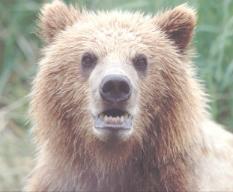
Excepts from an article written by Juliet Eilperin
Washington Post Staff Writer
Wednesday, December 27, 2006; A01
The Bush administration has proposed listing the polar bear as threatened under the Endangered Species Act, putting the U.S. government on record as saying that global warming could drive one of the world's most recognizable animals out of existence. There are 20,000 to 25,000 polar bears worldwide, 4,700 of which live in Alaska and spend part of the year in Canada and Russia. The other countries with polar bears in their Arctic regions are Denmark (Greenland) and Norway.
Identifying polar bears as threatened with extinction could have an enormous political and practical impact. Because scientists have concluded that carbon dioxide from power-plant and vehicle emissions is helping drive climate change worldwide, putting polar bears on the endangered species list raises the legal question of whether the government would be required to compel U.S. industries to curb their carbon dioxide output.
This move stems from the fact that rising temperatures in the Arctic are shrinking the sea ice that polar bears need for hunting. Northern latitudes are warming twice as rapidly as the rest of the globe, according to a 2004 scientific assessment, and by the end of the century annual ocean temperatures in the Arctic may rise an additional 13 degrees Fahrenheit. As a result, researchers predict that summer sea ice, which polar bears use as a platform to hunt for ringed seals, will decline 50 to 100 percent.
The ice in Canada's western Hudson Bay breaks up 2 1/2 weeks earlier than it did 30 years ago, giving polar bears there less time to hunt and build up fat reserves that sustain them for eight months before hunting resumes. As local polar bears have become thinner, female polar bears' reproductive rates and cubs' survival rates have fallen, spurring a 21 percent population drop from 1997 to 2004. Polar bears normally swim from one patch of sea ice to another to hunt for food, but they are not accustomed to going long distances. In September 2004, government scientists observed 55 polar bears swimming offshore in the Alaskan Beaufort Sea, an unprecedented spike, and four of those bears died. In a separate study that year, federal scientists identified three instances near the Beaufort Sea in which polar bears ate one another.
Footnote: Researchers disclosed today that a giant chunk of the Canadian Ice Shelf has recently fallen into the ocean. This shelf has shrunk by 90% since the 1930s. Food for thought!
